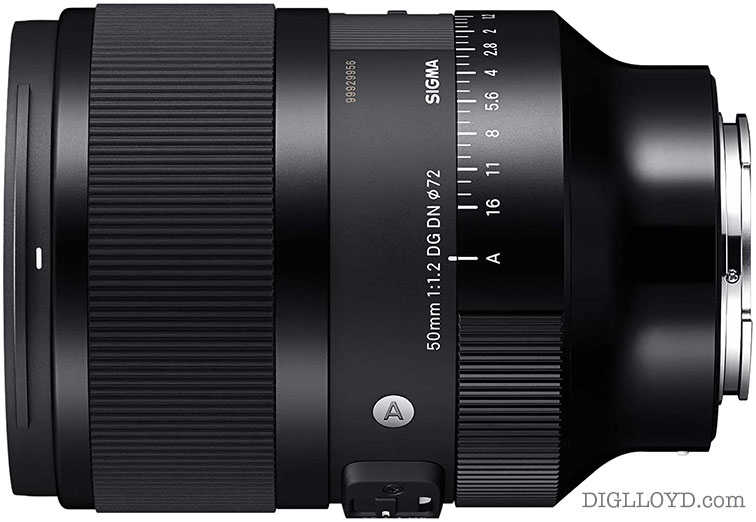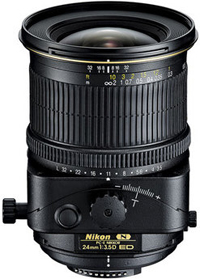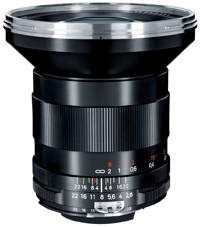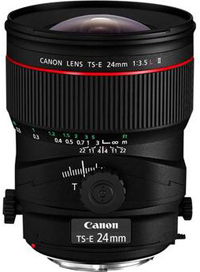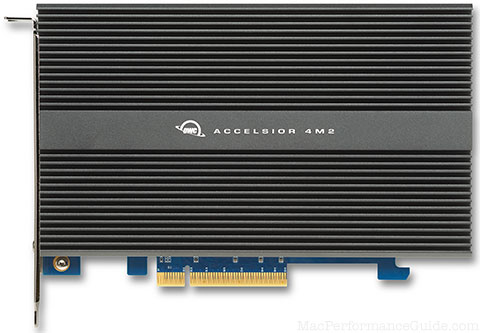

|


|

$200 Leica BP-SCL6 Lithium-Ion Battery (8.4V, 2200mAh) BACK IN STOCK in Accessories: Batteries and Power
|

|

|

|
IN STOCK!
For Sony mirrorless or Leica L.
Ultra-wide Zeiss 21mm or 24mm Tilt/Shift lens?
Related: depth of field, ergonomics, How-To, shift lens, tilt shift, tripods and support, Zeiss, Zeiss 21mm f/2.8 Distagon, Zeiss Distagon, Zeiss DSLR Lenses
I want a good wide angle lens for nature, landscapes and some indoor use (product-type photography). I shoot with a Nikon D700 and have a 17-35 for general wide angle use. I could afford to buy either the Zeiss 21mm f/2.8 Distagon or the Nikon PC-E 24mm f/3.5 tilt/shift. Can you give me your opinion of which one you would recommend? I know I haven't given you much info here on how I shoot but perhaps I have given you enough for you to hazard an opinion. — Ron L
This is a challenging question because the stated purposes vary, and shooting preferences and habits could exert much influence on the choice. It could also be a discussion more about capabilities than optical performance.
The short story
For nature and product photography where you are willing to take the time (and use a tripod), you cannot beat the tilt capability for allowing the focal plane to be adjusted for greater depth of field (or less). And the shift function is also useful for eliminating clutter. Unique effects are possible with a tilt/shift lens that cannot be achieved otherwise— maximum versatility.
For world-class build quality, relatively compact design, fast walk-around shooting, shooting at dusk or night, and general fast-paced use, I'd much rather shoot the Zeiss 21/2.8 Distagon. The fact is that I use the Zeiss 21/2.8 Distagon 10 times as much as my tilt/shift lenses.
When I hike it's the Zeiss. When I night-shoot in the city, it's the Zeiss. Even with a tripod, I find I make more creative images with impulsive shooting; I can explore more.
But if you're deliberate and know what you want to achieve, tilt and shift can be a great aid to achieving technical excellence eg by using tilt for vast depth of field.
Optically, the PC-E Nikon 24/3.5 is not as well corrected as the Zeiss 21/2.8 Distagon, and it's 2/3 stop slower with much more noticeable chromatic aberration.
The Canon 24/3.5L II is on par with the Nikon PC-E 24/3.5 optically, perhaps a bit better. The Canon build quality and tilt capability is mechanically superior to Nikon.
Price
The lenses in question here are the Zeiss 21mm f/2.8 Distagon, the Nikon PC-E 24mm f/3.5, the Canon TS-E 24mm f/3.5L II. The Canon 24mm f/1.4L II is also worth considering, but for different reasons not discussed here.
The Zeiss 21/2.8 (mini review) and Nikon/Canon 24mm tilt/shift lenses are expensive, approaching or exceeding US$2000. Choosing carefully is thus strongly advised on price alone.
Anyone considering these lenses will be well served by learning the details up front in my Guide to Zeiss ZF / Zeiss ZE Lenses, and also in DAP, which reviews and discusses a multitude of shift and tilt/shift lenses (and the Canon 24mm f/1.4L II).
Click any lens below to see specifications and pricing at B&H Photo.
Tilt and shift pros and cons
See Focus and Practical Depth of Field, in DAP. For stitching with a shift lens, see examples in DAP on the D3x examples page ("creek scene"). For using tilt, see Using Tilt in DAP. Those are just a few examples available on this site. For the advantages of shift, see Shift Lens Advantage.
Unique benefits of a tilt/shift lens include:
- tilt: increasing depth of field (with suitable planar subjects);
- tilt: decreasing depth of field, deliberate blur away from a sharp area;
- shift: perspective control; eliminating converging verticals (architecture);
- shift: eliminating distracting clutter above or below, left or right.
- shift: higher resolution stitched images with a left/center/right frame with a shift lens
On a tripod, one can take the time to get the tilt/shift adjustments just-so, especially tilt, where precision is critical. This style of shooting is more deliberate and thus might not be of interest to some shooters.
Tilt/shift lenses can be shot handheld the tilt and shift functions, but this takes some skill and experience, particularly the tilt function. It is also problematic with "loose" movements (self movement) on some lenses, particularly the Nikon designs. The Hartblei offerings (see DAP), stay nicely put in this sense, as do the Canon designs.
The extra bulk of tilt/shift lenses is definitely not a plus for handheld shooting, and the lenses will call some attention to themselves from their odd size and shape.
Zeiss 21/2.8 Distagon (no tilt/shift)
For walk-around shooting in the city, indoors or out, landscapes while hiking, grab shots, quick close-ups, etc, I'll turn to the Zeiss 21mm f/2.8 Distagon first. It is a spectacular lens.
The Zeiss 21/2.8 Distagon is more compact, and has better ergonomics than the Canon or Nikon tilt/shift offerings. Build quality is also outstanding, and focusing ergonomics are terrific. It just works, and it's beautiful to behold.
For video, stick with the Zeiss for its ergonomics and speed and image quality.
The Zeiss 21mm is also an f/2.8 lens with stellar wide-open performance, so shooting at dusk or night or in dimly-lit interiors is more than viable, like this example. With a flat field and high brilliance and sharpness wide open, it is my walk around lens of choice where I want wide angle capability (the Zeiss 28/2 would also be a good choice).
See my mini review of the Zeiss 21/2.8 Distagon, as well as my in-depth Guide.
Build quality
Be sure to read Brand-new Blur. Tilt/shift lenses are even harder to figure in that respect due to their extra mechanical design; when something is "off" it could be optics or mechanical or combined. I have little concern with the Zeiss ZF or Zeiss ZE offerings, having used over 30 examples and having only one known bad sample (which could have been shipping abuse).
Especially with Nikon lenses, I have concerns about "slop" with the Nikon PC-E lenses. For details, see my coverage in DAP, on Shift Lenses Build Quality page. This must be kept in perspective, but when paying for a $2000 lens, I expect tighter build, and I am concerned about longevity, dirt inside the mechanism, etc. But if you shoot Nikon and need or want tilt/shift, then do not let that dissuade you.
Build quality with the Canon TS-E lenses is superior to Nikon with optics no less good. And Canon's design allows tilt to be aligned with shift at 0° or at 90° — in the field. Nikon cannot do this with their PC-E lenses, which means you must decide on one way or the other, or buy two copies of each PC-E lens.
Conclusions
My first choice is the Zeiss 21/2.8 Distagon, based on the simple fact that my history shows 10X more use of it than my tilt/shift lenses.
Even though tilt has clear advantages for depth of field, I find that I rarely have the time or patience to fiddle with tilt, and that I make more and better images by focusing on content and being creative.
See also
- Brand-new Blur
- diglloyd's Advanced Photography — numerous shift and tilt/shift lens reviews
- Zeiss ZF Lenses — the Zeiss 21mm f/2.8 Distagon and all the others
- Do filters degrade image quality?


















